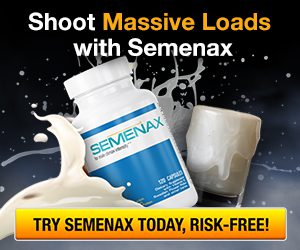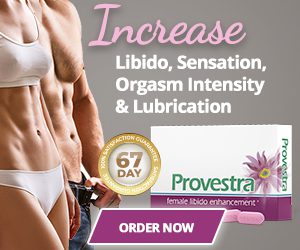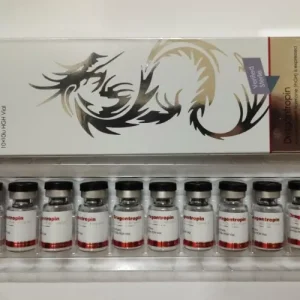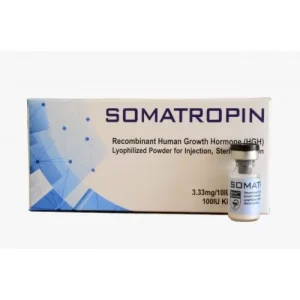Steroids
The Ultimate Chain and Plate Curls for Pumping Biceps

Chain and plate curls can be effective exercises to target and develop your biceps, particularly if you are an experienced lifter looking to add variety to your arm training routine. These exercises can help provide a unique stimulus to your biceps muscles and contribute to their growth. Here's how to perform chain and plate curls for better biceps.
Chain Curls:
- Setup: This exercise requires a pair of chains and a barbell. Begin by draping the chains over the barbell and loading it with weight plates on both sides. The chains should hang down evenly.
- Grip: Stand with your feet shoulder-width apart and grip the barbell with an underhand (supinated) grip, hands spaced about shoulder-width apart.
- Curl: Start with your arms fully extended and the chains just off the ground. Curl the barbell toward your chest while keeping your elbows close to your sides and back straight.
- Squeeze: At the top of the movement, squeeze your biceps for a second to maximize the contraction.
- Lower: Slowly lower the barbell back to the starting position, allowing the chains to return to the ground.
- Repetition: Perform 3-4 sets of 8-12 reps. You can adjust the weight by adding or removing plates from the barbell to match your strength level.
Plate Curls:
- Setup: For plate curls, you'll need a weight plate with a hole in the center. Stand with your feet shoulder-width apart, and hold the plate with both hands through the hole, allowing the plate to hang below your hands.
- Grip: Hold the plate with a supinated (underhand) grip and extend your arms fully.
- Curl: Curl the plate toward your chest while keeping your elbows close to your sides.
- Squeeze: At the top of the movement, contract your biceps and hold for a second.
- Lower: Slowly lower the weight plate, fully extending your arms.
- Repetition: Perform 3-4 sets of 8-12 reps.
Remember to use proper form, control the weight, and focus on the mind-muscle connection during these exercises. Ensure you gradually increase the weight as you progress to continue challenging your biceps for growth. Additionally, incorporate these exercises into your overall arm training routine, which should include a variety of biceps and triceps exercises for balanced arm development.
Related Article: Bodybuilding Protein Cycling for Massive Gains
Biceps Secrets Only Elite Bodybuilders Know
Elite bodybuilders often have a combination of genetics, discipline, and training knowledge that contributes to their exceptional bicep development. While there are no "secrets" per se, there are several key principles and strategies that elite bodybuilders use to build impressive biceps:
Consistent Progressive Overload
To stimulate muscle growth, you need to increase the weight you lift over time progressively. Elite bodybuilders consistently challenge themselves by lifting heavier weights or performing more reps with the same weight. This helps break plateaus and stimulate muscle growth.
Varied Training Methods
Elite bodybuilders incorporate various bicep exercises into their routines to target the muscles from different angles. This includes curls, hammer curls, preacher curls, and concentration curls, among others.
Proper Form
Maintaining strict form during bicep exercises is crucial. Elite bodybuilders prioritize strict, controlled movements to ensure that they are targeting the biceps and minimizing the involvement of other muscle groups.
Mind-Muscle Connection
Elite bodybuilders focus on establishing a strong mind-muscle connection with their biceps. This means they are mentally present during each repetition, concentrating on the contraction and stretch of the biceps throughout the exercise.
Nutrition
Proper nutrition is essential for muscle growth. Elite bodybuilders ensure they are in a caloric surplus to support muscle growth, and they pay attention to their macronutrient intake, ensuring an adequate amount of protein for muscle repair and growth.
Supplementation
Some elite bodybuilders use supplements like protein powder, creatine, and branched-chain amino acids (BCAAs) to support their muscle-building efforts. However, supplements should complement a well-balanced diet, not replace it.
Adequate Rest and Recovery
Muscle growth happens during periods of rest, not during the workout itself. Elite bodybuilders prioritize sleep and allow sufficient time between workouts targeting the same muscle group to ensure full recovery.
Volume and Frequency
Elite bodybuilders typically incorporate high-volume and high-frequency training into their routines. This means more sets and reps for the biceps and often hitting the biceps multiple times per week.
Periodization
Periodization involves cycling through different training phases, such as strength, hypertrophy, and endurance. Elite bodybuilders use periodization to ensure their training stays varied and effective.
Genetics and Patience
It's important to recognize that genetics play a significant role in muscle development. Elite bodybuilders understand their genetic potential and work patiently to maximize it over years of consistent training.
Professional Guidance
Some elite bodybuilders work with coaches or trainers who can provide expert training, nutrition, and supplementation guidance.
Motivation and Consistency
Elite bodybuilders are highly motivated and maintain consistency in their training and nutrition. They stay dedicated to their goals over the long term, which is crucial for building impressive muscle mass.
Understanding that what works for elite bodybuilders may not be suitable for everyone is essential. Your training and nutrition plan should be tailored to your goals, genetics, and individual preferences. Consulting with a qualified fitness professional or coach can help you develop a personalized plan for building your biceps and achieving your bodybuilding goals.
Must Read: Testosterone Propionate Cycles Solo cycle
Why A Biceps Pump Is Crucial Before A Contest
In the lead-up to a bodybuilding competition, bodybuilders often go through a specific "cutting" or "pre-contest" phase. During this phase, the primary goals are to reduce body fat to showcase muscle definition and ensure that the biceps and other muscles look their best on stage. Here's a sample training and nutrition cycle for the biceps in the weeks leading up to the competition:
Training:
- High-Volume Workouts: Bodybuilders typically continue to train biceps with high volume to maintain and even improve muscle fullness and separation. This may involve multiple exercises and sets targeting the biceps.
- Mind-Muscle Connection: Focus on establishing a strong mind-muscle connection during bicep workouts. Ensure you're feeling the bicep muscles working with each repetition.
- Drop Sets and Supersets: Introduce techniques like drop sets and supersets to intensify workouts and stimulate muscle definition.
- Frequency: Continue to train biceps at least once a week. Depending on your program, you may perform biceps exercises on the same day as back training or in a separate workout.
- Progressive Overload: Maintain or slightly decrease the weight used to emphasize form and muscle contraction while increasing the number of reps and sets.
Nutrition:
- Caloric Deficit: Bodybuilders typically aim for a caloric deficit to reduce body fat during the pre-contest phase. A moderate, sustainable calorie deficit is essential to avoid muscle loss.
- Macronutrient Balance: Continue prioritizing protein intake to support muscle retention and repair. Carbohydrate intake may be adjusted depending on individual preferences and energy needs, but monitoring and adjusting this carefully is important.
- Balanced Diet: Consume a well-balanced diet that includes lean protein sources, complex carbohydrates, healthy fats, and plenty of micronutrients from vegetables and fruits.
- Meal Timing: Some bodybuilders succeed with smaller, more frequent meals to help maintain energy levels and control hunger.
- Hydration: Stay adequately hydrated, as dehydration can negatively affect muscle definition.
- Supplementation: Continue with your usual supplementation plan, which may include vitamins, minerals, and possibly thermogenic supplements. Consult with a healthcare professional or nutritionist for personalized advice.
- Cheat Meals: Some bodybuilders incorporate occasional cheat meals to help psychologically manage the rigors of a strict diet. These should be controlled and not lead to excessive calorie surplus.
- Monitoring: Track your progress by tracking body weight, fat percentage, and physical changes. Adjust your diet and exercise program as needed based on these measurements.
Recovery:
- Adequate Sleep: Prioritize sleep to support recovery and minimize muscle catabolism.
- Active Recovery: Incorporate light, low-impact activities such as walking or swimming on rest days to aid recovery and maintain a calorie deficit.
Biceps Hacks For Intermediate and Beginner Bodybuilders
To maximize biceps development and help bodybuilders achieve impressive arm size and definition, here are some effective "hacks" or strategies to consider:
-
Train With Proper Form:
- Use strict form to ensure that your biceps are the primary muscles engaged during biceps exercises.
- Avoid using momentum, swinging, or jerking to lift the weight. This reduces the effectiveness of the exercise and increases the risk of injury.
-
Focus on the Mind-Muscle Connection:
- Concentrate on feeling the biceps contract during each repetition. This enhances muscle engagement and helps you develop a better mind-muscle connection.
- Visualize your biceps working with every rep, and try to feel the muscle stretching and contracting.
-
Variety of Biceps Exercises:
- Incorporate a range of biceps exercises, such as barbell curls, dumbbell curls, hammer curls, preacher curls, concentration curls, and cable curls.
- Vary your exercises to target the biceps from different angles and prevent plateaus.
-
Utilize Advanced Techniques:
- Techniques like drop sets, supersets, and negatives can intensify your biceps workouts and stimulate growth.
- Experiment with partial reps and isometric contractions to challenge your biceps differently.
-
Adjust Hand Positions:
- Changing your hand position can alter the emphasis on different parts of the biceps. For instance, a wide grip on a barbell curl may work the outer biceps more, while a narrow grip can emphasize the inner biceps.
-
Pre-Fatigue Techniques:
- Begin your workout with isolation exercises like concentration curls or cable curls to pre-fatigue the biceps. This can make compound movements more effective for growth.
-
Proper Warm-up:
- Warm up the biceps with light weights or resistance bands to increase blood flow and reduce the risk of injury.
-
Use Wrist Straps Sparingly:
- While wrist straps can help you lift heavier weights, try to use them sparingly. Building grip strength can indirectly benefit your biceps development.
-
Nutrition and Recovery:
- Consume a well-balanced diet with adequate protein, healthy fats, and carbohydrates to support muscle growth.
- Ensure you get enough rest and recovery to allow your muscles to repair and grow.
-
Supplementation:
- Some bodybuilders use supplements like creatine and branched-chain amino acids (BCAAs) to support their muscle-building efforts. Consult with a healthcare professional or nutritionist before adding supplements to your routine.
-
Periodization:
- Incorporate periodization into your training plan to cycle between different phases of intensity and volume, such as strength, hypertrophy, and endurance.
-
Stay Consistent:
- Consistency is key in bodybuilding. Stick to your training and nutrition plan over the long term to see substantial results in biceps development.
-
Consult a Coach or Trainer:
- If you're serious about your bodybuilding goals, consider working with a coach or trainer who specializes in bodybuilding to provide expert guidance and personalized advice.
Does Testosterone Play A Role In Biceps Development?
Testosterone is an essential hormone for muscle development in both men and women, and it plays a role in the growth and maintenance of all skeletal muscles, including the biceps. Here's how testosterone influences bicep muscle development:
Protein Synthesis
Testosterone increases the rate of protein synthesis in muscle tissue. Protein synthesis is the process by which the body builds new muscle proteins and repairs damaged ones. This is a key mechanism for muscle growth.
Muscle Fiber Hypertrophy
Testosterone can lead to muscle fiber hypertrophy, which means individual muscle fibers increase in size. This results in larger and stronger muscles, including the biceps.
Reducing Muscle Breakdown
Testosterone can help reduce the rate of muscle protein breakdown, meaning your muscles are better protected against catabolism (muscle loss).
Increased Training Intensity
Testosterone is associated with increased motivation and energy levels, which can lead to more intense and productive workouts. This can contribute to better muscle development, including the biceps.
Bone Health
Strong, healthy bones are essential for supporting muscle growth. Testosterone helps maintain bone density, which indirectly supports muscle development.
Androgen Receptors
Testosterone binds to androgen receptors on muscle cells, initiating processes that promote muscle growth and repair.
It's important to note that while testosterone is a key factor in muscle development, it's not the only factor. Nutrition, training, genetics, and other hormones also play significant roles. Additionally, the impact of testosterone on muscle growth varies from person to person, as individuals have different levels of natural testosterone production and androgen receptor sensitivity.
For those looking to optimize their bicep and overall muscle development, it's essential to maintain a balanced and healthy lifestyle:
- Strength Training: Engage in a structured strength training program that includes exercises specifically targeting the biceps, such as curls and variations of curls.
- Proper Nutrition: Consume a well-balanced diet with sufficient protein, carbohydrates, and healthy fats to support muscle growth and recovery.
- Adequate Rest: Allow your muscles time to recover and grow by getting enough sleep and incorporating rest days into your workout routine.
- Stress Management: High levels of chronic stress can negatively impact testosterone levels, so managing stress is crucial.
- Consultation with Healthcare Professionals: If you suspect a hormone imbalance or have concerns about testosterone levels, it's essential to consult with a healthcare professional or endocrinologist. They can guide appropriate interventions or treatments.
Overall
It's crucial to remember that individual responses to training and nutrition can vary significantly. Therefore, working with a coach or nutritionist experienced in pre-contest preparation can help you fine-tune your approach and optimize your bicep development and overall physique for a bodybuilding competition. Additionally, it's essential to tailor your program to your specific needs, body type, and goals.
Genetics also affect muscle development, so your results may vary. What works best for you might require some experimentation and adjustment. Always prioritize safety, proper technique, and gradual progression in your biceps training.
Read More: Horse Chestnut and Other Supplements to Get Rid of Water Retention
Steroids
Decoding IGF-1 LR3: A Guide to its Benefits
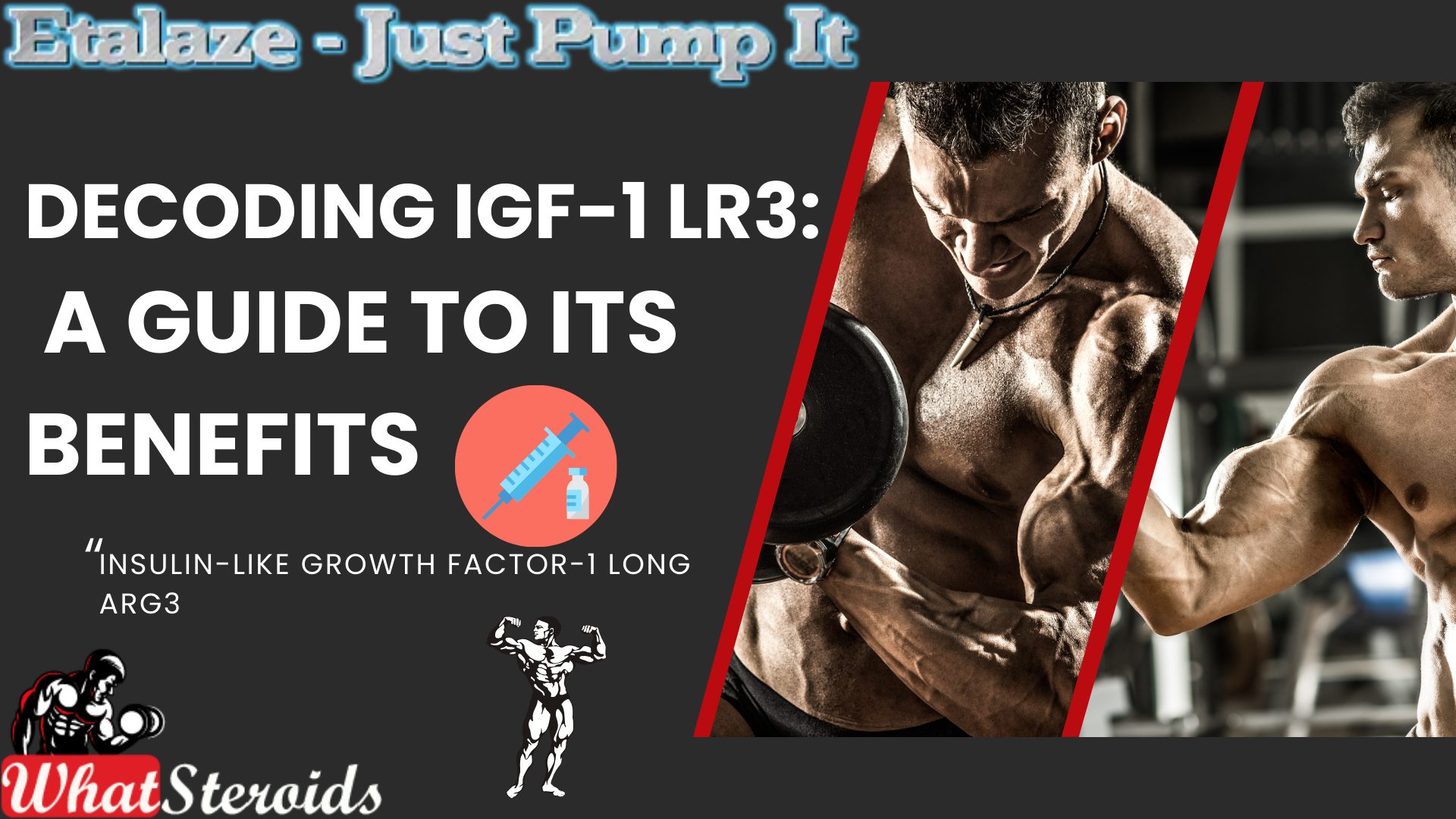
IGF-1 LR3 (Insulin-like Growth Factor-1 Long Arg3) is a synthetic variant of IGF-1, a hormone produced by the liver in response to growth hormone (GH). Unlike GH, which works indirectly, IGF-1 directly facilitates the growth and repair of muscle cells.
Related Article: Ostarine for Beginners; The Ultimate Guide
This modified version of IGF-1 is engineered to avoid binding with IGF-binding proteins, extending its half-life to 20–30 hours. As a result, it remains active in the body significantly longer than natural IGF-1.
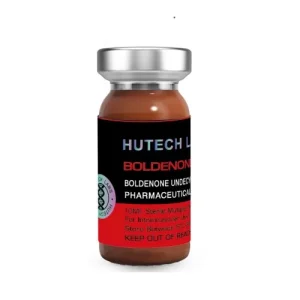 Click here to BuyBoldenone 300 by Hutech
Click here to BuyBoldenone 300 by Hutech
Many performance athletes incorporate IGF-1 LR3 post-workout to enhance muscle growth, speed up recovery, and support fat loss. When injected into specific muscle groups, it often produces localized effects. Additionally, it helps with nutrient distribution and, in some cases, improves insulin sensitivity.
On the other hand, human growth hormone (HGH) operates more broadly and indirectly, stimulating the liver to produce IGF-1 and offering more systemic benefits such as improved skin health, joint support, and fat reduction, albeit at a slower pace.
Typical IGF-1 LR3 doses range from 20–50 mcg daily, administered subcutaneously or intramuscularly, often following a workout.
Key Features of IGF-1 LR3
Enhanced Bioavailability: It avoids binding with IGF-binding proteins, increasing its potency.
Muscle Growth & Repair: Directly stimulates muscle cell proliferation and differentiation.
Improved Nutrient Distribution: Helps shuttle nutrients into muscle cells, supporting recovery.
Potential Fat Loss Benefits: Some users report improved insulin sensitivity and fat metabolism.
Mechanism of Action
IGF-1 LR3 interacts with IGF-1 receptors on muscle cells, activating pathways like PI3K-AKT and MAPK, which are crucial for cell growth and regeneration. This makes it a powerful tool for bodybuilders and athletes looking to optimize recovery and muscle development.
What Are the Top 10 Alternatives to IGF-1 LR3?
Here are some of the top alternatives to IGF-1 LR3, each with unique benefits for muscle growth, recovery, and performance:
BPC-157 – Known for its regenerative properties, it enhances healing and tissue repair.
CJC-1295 – A growth hormone-releasing peptide that boosts GH levels for muscle development.
Ipamorelin – Stimulates GH release with minimal side effects, making it a safer option.
MK-677 (Ibutamoren) – A potent GH secretagogue that promotes muscle growth and fat loss.
Sermorelin – Encourages natural GH production, supporting recovery and lean muscle gains.
Tesamorelin – Primarily used for fat loss, but also aids in muscle preservation.
Follistatin-344 – Inhibits myostatin, allowing for increased muscle hypertrophy.
PEG-MGF (Pegylated Mechano Growth Factor) – Enhances muscle repair and growth post-exercise.
GHRP-6 – Stimulates appetite and GH release, supporting muscle mass gains.
GHRP-2 – Similar to GHRP-6 but with fewer hunger-related side effects.
Each of these peptides has distinct mechanisms and benefits.
Must Read: Are Nootropics a Better Option to AAS?
Potential Risks Associated With IGF-1 LR3
IGF-1 LR3 comes with several potential risks, especially for bodybuilders using it to enhance muscle growth. Here are some key concerns:
Hypoglycemia (Low Blood Sugar) – IGF-1 LR3 increases glucose uptake in muscle cells, which can lead to dangerously low blood sugar levels if not managed properly.
Organ Growth – Since IGF-1 affects all tissues, excessive use may lead to unwanted growth in organs, increasing health risks.
Cancer Risk – IGF-1 plays a role in cell proliferation, and elevated levels have been linked to an increased risk of certain cancers.
Water Retention & Edema – Some users experience bloating and fluid retention, which can affect performance and aesthetics.
Joint Pain & Stiffness – Excessive IGF-1 levels may contribute to joint discomfort due to increased tissue growth.
Cardiovascular Issues – There is some concern that IGF-1 LR3 could contribute to heart enlargement or other cardiovascular complications.
Desensitization – Long-term use may reduce the body's natural IGF-1 production, leading to dependency
Overall
IGF-1 LR3's ability to bypass IGF-binding proteins makes it more potent but also increases the likelihood of desensitization with prolonged use. For those considering it, careful dosing and monitoring are crucial to mitigate side effects.
Steroids
AOD-9604: The Fat-Burning Peptide Explained
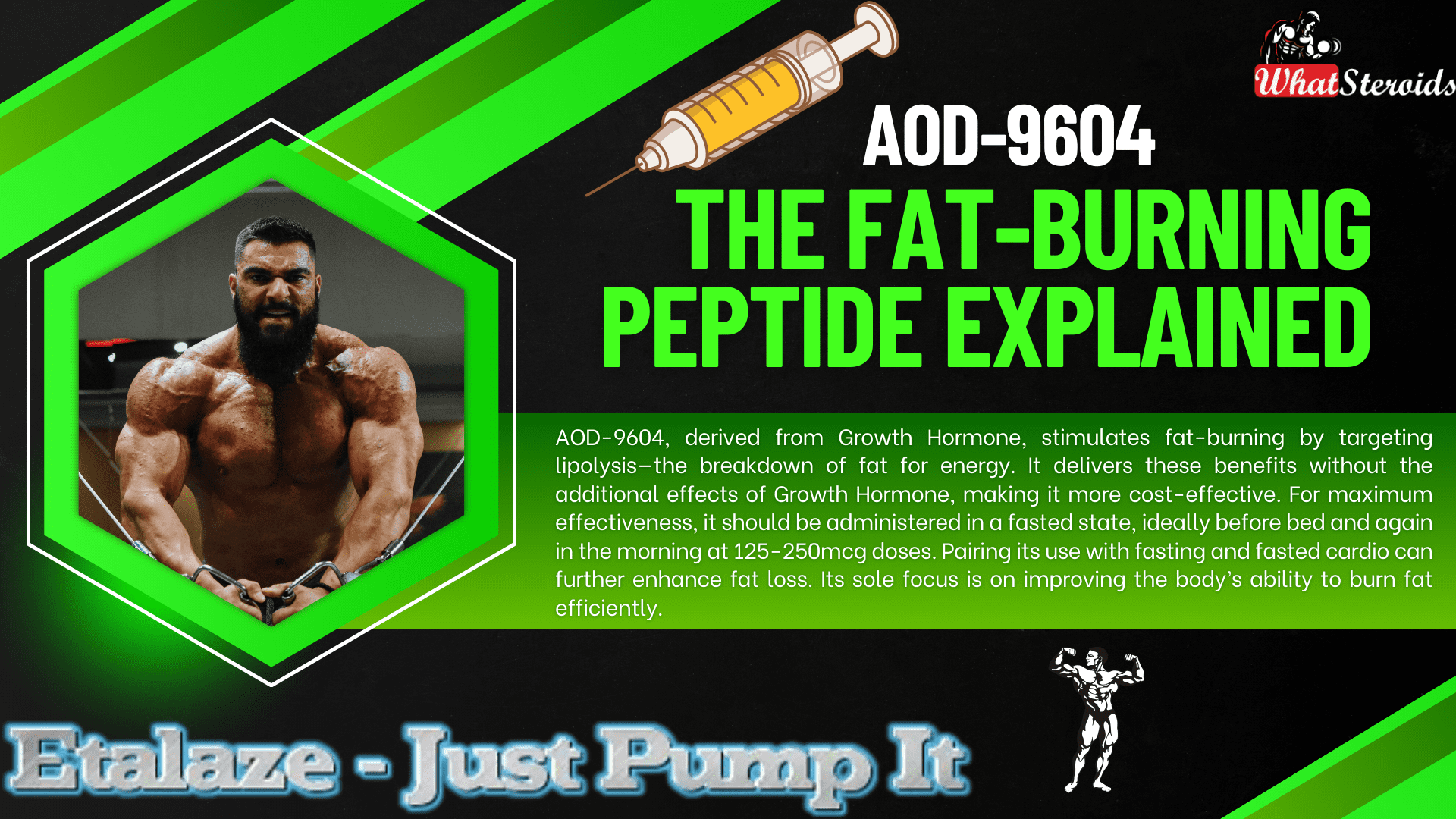
AOD-9604, along with the similar HGH Frag 176-191, is a peptide derived from Growth Hormone that includes only the amino acids in HGH responsible for stimulating fat breakdown, known as lipolysis.
This means that these peptides offer the fat-burning benefits of HGH without its other effects—whether beneficial or adverse—and come at a lower cost.
Related Article: Anavar Cycle for Men and Women
Lipolysis refers to the process where fat cells are broken down to be utilized as energy. AOD-9604 promotes accelerated fat loss by increasing the body's use of fat as fuel.
For optimal results, the peptides should be used in a fasted state. AOD-9604 and Frag 176-191 are most effective when administered at a dose of 125-250mcg before bedtime (at least 3-4 hours after eating) and in the morning at the same dose, followed by a fasting period of 3-4 hours, ideally combined with fasted cardio.
Check Out Dragontropin HGH 100 IU by Dragon Pharma
Similar Peptides with Fat-Burning Effect
Here’s a list of 10 peptides similar to AOD-9604, each with a brief description:
Ipamorelin: A growth hormone-releasing peptide (GHRP) that stimulates the natural release of growth hormone, promoting fat loss, muscle growth, and improved recovery without affecting other hormones like cortisol or prolactin.
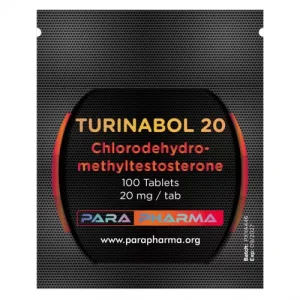 Click Here to Buy: Turinabol 20 by Para Pharma
Click Here to Buy: Turinabol 20 by Para Pharma
CJC-1295: A peptide that increases growth hormone and IGF-1 levels, aiding in fat loss, muscle gain, and improved sleep quality. It has a long half-life, making it convenient for users.
HGH Frag 176-191: A fragment of human growth hormone specifically designed for fat-burning. It targets adipose tissue without the broader effects of full-length HGH.
Tesamorelin: Known for reducing visceral fat, this peptide stimulates the release of growth hormone and is often used for weight management and metabolic health.
BPC-157: While primarily known for healing and recovery, BPC-157 can support fat loss indirectly by improving gut health and reducing inflammation.
Melanotan II: Originally developed for skin tanning, it also has appetite-suppressing properties, making it useful for weight management.
Thymosin Beta-4 (TB-500): Focused on healing and recovery, it can enhance physical performance and indirectly support fat loss through improved activity levels.
GHRP-6: A growth hormone-releasing peptide that boosts appetite and metabolism, aiding in muscle growth and fat loss.
Semaglutide: A GLP-1 receptor agonist that regulates appetite and blood sugar levels, making it effective for weight loss and metabolic health.
MK-677 (Ibutamoren): A growth hormone secretagogue that increases growth hormone and IGF-1 levels, promoting fat loss, muscle gain, and improved recovery.
List of Peptides With a Counteractive Effect Bodybuilders Must Avoid
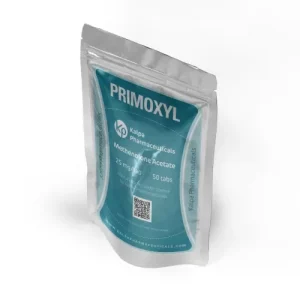 Click Here to Buy Primoxyl 25 by Kalpa Pharmaceuticals
Click Here to Buy Primoxyl 25 by Kalpa Pharmaceuticals
Some peptides can inadvertently lead to fat gain due to their effects on metabolism and appetite regulation. Here are a few that bodybuilders might want to avoid or use cautiously:
- GHRP-6 – While it stimulates growth hormone release, it also significantly increases appetite, which can lead to excess calorie consumption and fat gain.
- IGF-1 LR3 – This peptide enhances muscle growth but can also promote fat storage if not carefully managed with diet and training.
- MK-677 (Ibutamoren) – Though technically a growth hormone secretagogue rather than a peptide, it boosts GH levels but often leads to increased hunger and potential fat accumulation.
- CJC-1295 with DAC – While effective for muscle growth, its prolonged GH release can sometimes lead to unwanted fat retention if not paired with a strict diet
Overall
AOD-9604, derived from Growth Hormone, stimulates fat-burning by targeting lipolysis—the breakdown of fat for energy. It delivers these benefits without the additional effects of Growth Hormone, making it more cost-effective. For maximum effectiveness, it should be administered in a fasted state, ideally before bed and again in the morning at 125-250mcg doses. Pairing its use with fasting and fasted cardio can further enhance fat loss. Its sole focus is on improving the body’s ability to burn fat efficiently.
Read More: How Much Do You Know About B-AET? A Fat Burner You’ve Been Missing
Bodybuilding
Understanding Trenbolone-Induced Cough (“Tren Cough”)
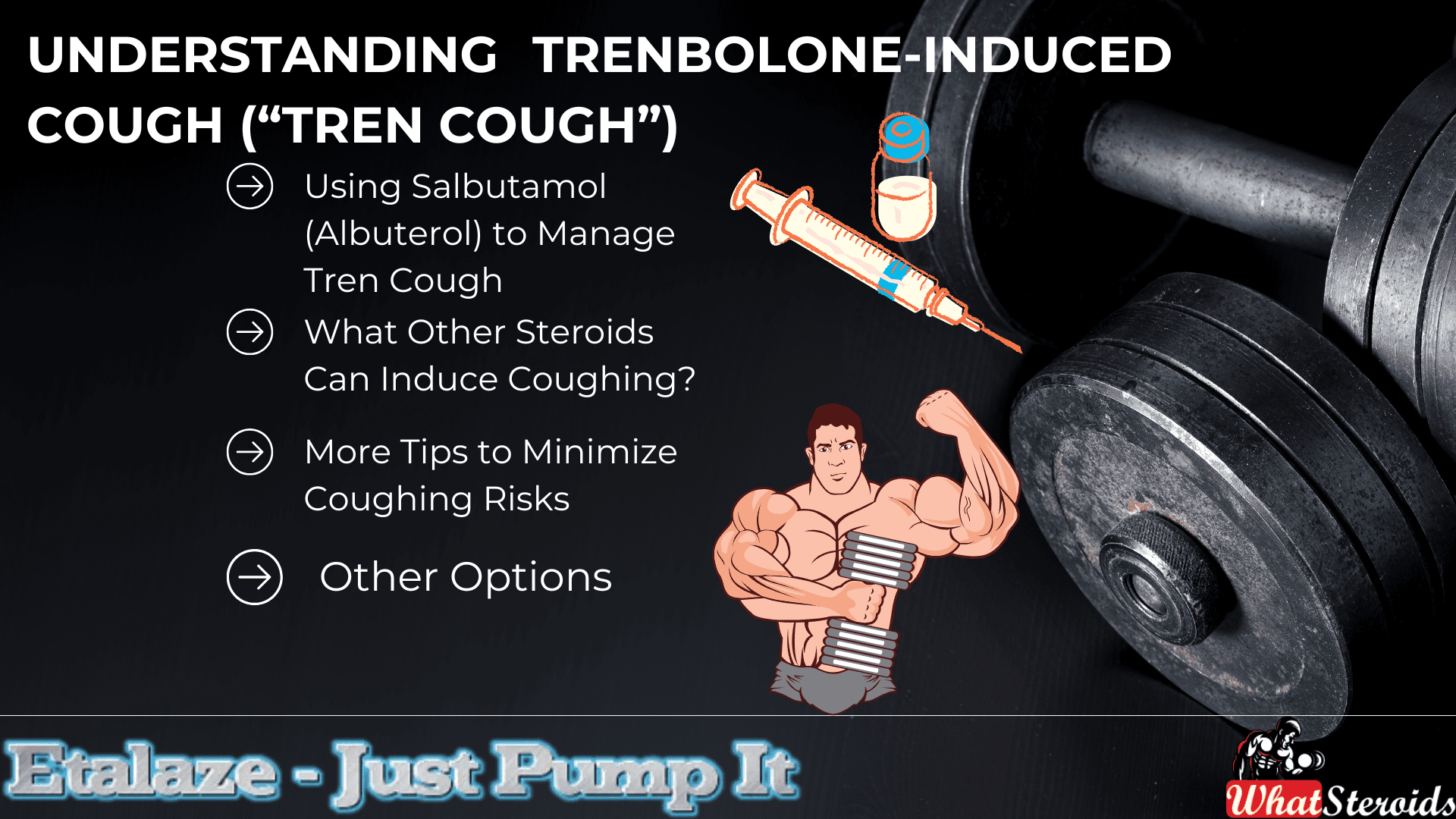
Trenbolone, a potent anabolic steroid, can sometimes cause “tren cough”—a sudden and intense coughing episode shortly after injection. Although not exclusive to Trenbolone, it is more commonly associated with this substance due to its highly irritant nature.
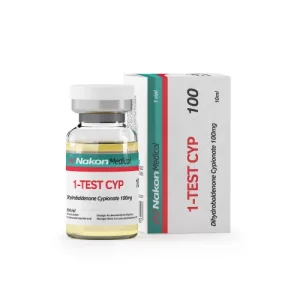 Click Here To Buy 1-Test Cyp 100 by Nakon Medical
Click Here To Buy 1-Test Cyp 100 by Nakon Medical
Mechanisms Behind Tren Cough
Solvent and Carrier Irritation
Trenbolone formulations often include volatile solvents like benzyl alcohol or benzyl benzoate, which may irritate lung tissues when absorbed quickly into systemic circulation.
Prostaglandin Release
Trenbolone promotes increased production of prostaglandins, particularly PGF2α. This compound triggers contraction in the smooth muscles of the lungs, leading to bronchoconstriction and coughing.
Micro-Oil Embolism
Tiny oil droplets from an injection can reach capillaries and travel to the lungs, causing mild embolic reactions that lead to temporary oxygen deprivation and coughing.
Histamine and Mast Cell Activation
For some individuals, Trenbolone triggers histamine release and mast cell activation, mimicking an allergic response and causing bronchospasms and cough reflexes.
Related Article: Best Syringes for Steroid Injection on Amazon
Using Salbutamol (Albuterol) to Manage Tren Cough
- Salbutamol, a widely-used β2-adrenergic receptor agonist, can alleviate tren cough symptoms by:
- Relaxing bronchial muscles, easing spasms that cause coughing.
- Inhibiting prostaglandin effects, reducing bronchoconstriction associated with PGF2α.
- Opening airways, preventing severe respiratory restrictions in susceptible individuals.
Application Methods
Inhaler (Optimal)
Take 1–2 puffs of salbutamol (100–200 mcg) 5–10 minutes before a Trenbolone injection. If coughing occurs afterward, additional puffs can swiftly resolve the issue.
Oral Tablets (Moderate)
Consuming 2–4 mg tablets 30–60 minutes before injection offers slower, longer-lasting relief but may be less effective than inhalation methods.
Nebulizer (Severe Cases)
For individuals with frequent episodes, nebulized doses of 2.5 mg salbutamol can provide substantial relief.
Preventive Measures to Reduce Tren Cough Risk
- Inject slowly to minimize systemic absorption and irritant effects.
- Split doses to lower reaction severity with smaller quantities.
- Opt for ventrogluteal injection sites, which have fewer blood vessels, reducing oil embolism risk.
- Choose lower-concentration solutions to lessen irritation, as higher concentrations (e.g., Tren Ace 200 mg/ml) are more likely to provoke reactions.
What Other Steroids Can Induce Coughing?
Here's a curated list of peptides, SARMs, and PEDs that may potentially cause coughing or respiratory irritation in bodybuilders and fitness enthusiasts:
Peptides
IGF-1 LR3 (Insulin-like Growth Factor): Known for its anabolic effects, IGF-1 LR3 can occasionally cause mild respiratory irritation due to systemic absorption.
TB-500 (Thymosin Beta-4): While rare, improper injection techniques or high doses may lead to transient coughing episodes.
GHRP-6 (Growth Hormone-Releasing Peptide): This peptide can stimulate histamine release, potentially leading to bronchospasms and coughing.
SARMs (Selective Androgen Receptor Modulators)
RAD-140: (Testolone) Some users report throat irritation or coughing, often attributed to solvents used in liquid formulations.
YK-11: Known for its myostatin-inhibiting properties, YK-11 may cause mild respiratory discomfort in sensitive individuals.
LGD-4033 (Ligandrol): Though uncommon, some users experience coughing due to carrier solvents or allergic-like reactions.
PEDs (Performance-Enhancing Drugs)
Boldenone Undecylenate (Equipoise): This injectable steroid can cause “Equipoise cough,” similar to tren cough, due to oil embolism or irritant solvents.
Testosterone Suspension: The water-based formulation may lead to coughing episodes if injected improperly or absorbed rapidly.
Nandrolone Decanoate (Deca-Durabolin): While less common, coughing can occur due to histamine release or systemic irritation.
More Tips to Minimize Coughing Risks
- Use proper injection techniques to avoid embolic reactions.
- Opt for lower-concentration solutions to reduce irritant effects.
- Consider antihistamines or bronchodilators for individuals prone to respiratory sensitivity.
Read More: Joint Stiffness: How to Manage It While on AAS
Are There Alternatives to Cough-inducing Steroids?
Here are some alternatives to cough-inducing steroids that can provide similar anabolic effects while minimizing respiratory irritation:
Peptides
IGF-1 LR3 (Insulin-like Growth Factor)
Promotes muscle growth and recovery without the irritant properties of certain steroids.
TB-500 (Thymosin Beta-4)
Enhances tissue repair and reduces inflammation, making it a safer option for recovery.
BPC-157 (Body Protection Compound)
Known for its healing properties, it supports muscle repair and joint health.
SARMs (Selective Androgen Receptor Modulators)
RAD-140 (Testolone)
Provides significant muscle-building effects with fewer systemic side effects compared to traditional steroids.
LGD-4033 (Ligandrol)
Boosts lean muscle mass and strength without the risk of respiratory irritation.
MK-677 (Ibutamoren)
Stimulates growth hormone release, aiding in muscle growth and recovery.
Natural Alternatives
Turkesterone
A plant-based ecdysteroid that supports muscle protein synthesis and recovery.
Ecdysterone
Another natural compound that mimics anabolic effects without the harsh side effects.
Creatine Monohydrate
Enhances strength and muscle mass through improved energy production during workouts.
Other Options
Human Growth Hormone (HGH)
Promotes muscle growth and fat loss, though it requires careful monitoring due to potential side effects.
Testosterone Boosters
Natural supplements like D-Aspartic Acid or Tribulus Terrestris can help optimize testosterone levels for muscle growth.
SARMs Alternatives
Legal and safer versions of SARMs are available, offering similar benefits without the risks associated with traditional SARMs.
Overall
We have explored the phenomenon of "tren cough," a sudden, intense coughing episode often caused by Trenbolone injections due to factors like solvent irritation, prostaglandin release, micro-oil embolism, or histamine activation. Preventive measures such as using salbutamol (via inhaler, oral tablets, or nebulizer), injecting slowly, splitting doses, and opting for lower-concentration solutions were highlighted.
Additionally, alternative compounds to tren cough-inducing steroids were discussed, including peptides like IGF-1 LR3 and TB-500, SARMs such as RAD-140 and LGD-4033, and natural options like Turkesterone, ecdysterone, and creatine. These alternatives provide anabolic effects while minimizing respiratory side effects. The conversation also underscored the importance of proper injection techniques and thoughtful compound selection to reduce risks.
-

 Steroids2 years ago
Steroids2 years agoShavers and Other Body Grooming Equipment for Bodybuilders In 2023
-

 Steroids2 years ago
Steroids2 years agoChatGPT and Other Avenues to Find Great Bodybuilding Coaches
-

 Steroids2 years ago
Steroids2 years agoBest Oil Recommendations Before Competition for Subtle Shimmer
-

 Steroids2 years ago
Steroids2 years agoPowerlifting Vs Power Building: Find Out the Big Difference and When to Shift Between the Two
-

 Nutrition2 years ago
Nutrition2 years agoEverything Nutritional Food: What’s Too Much Or Too Little
-

 Bodybuilding Products1 year ago
Bodybuilding Products1 year agoTelmisartan In Bodybuilding: An Expert’s Advice
-

 Bodybuilding8 months ago
Bodybuilding8 months agoPrimal Movements: Our Ultimate Guide for Maximum Results
-

 Bodybuilding1 year ago
Bodybuilding1 year agoChia Seeds in A Bodybuilder’s Diet: An Expert’s Advice
-
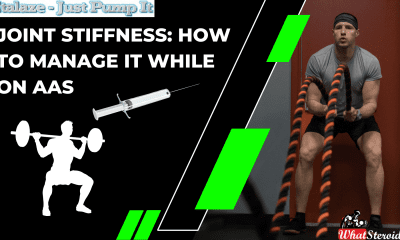
 Anabolic Steroids10 months ago
Anabolic Steroids10 months agoJoint Stiffness: How to Manage It While on AAS
-
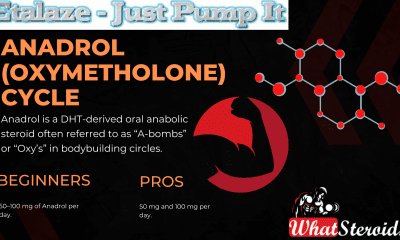
 Steroids1 year ago
Steroids1 year agoAnadrol Cycle: Benefits, Doses, Alternatives, etc.
-

 Anabolic Steroids1 year ago
Anabolic Steroids1 year agoLegality of Anabolic Steroids In Latin America
-

 Beginners2 years ago
Beginners2 years agoTren Cycle for Beginners
-
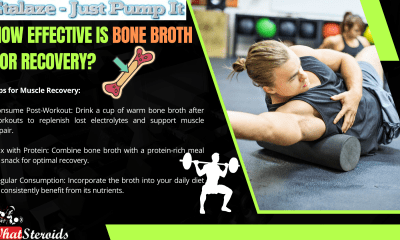
 Bodybuilding9 months ago
Bodybuilding9 months agoHow Effective is Bone Broth for Recovery?
-
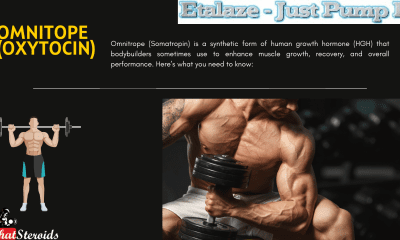
 Steroids10 months ago
Steroids10 months agoOmnitope (Oxytocin)
-

 Bodybuilding1 year ago
Bodybuilding1 year agoHow Much Is Too Much Cardio? Understanding Heart Rate Zones
-

 Bodybuilding1 year ago
Bodybuilding1 year agoList of FDA-Approved Peptides
-
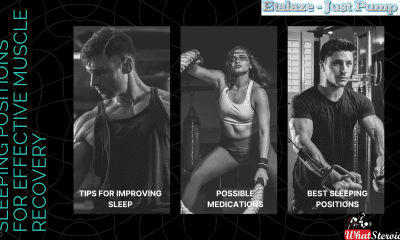
 Steroids9 months ago
Steroids9 months agoSleeping Positions for Effective Muscle Recovery
-

 Bodybuilding2 years ago
Bodybuilding2 years agoCompetition Prep Cycle for Pro Bodybuilders
-

 Bodybuilding1 year ago
Bodybuilding1 year agoCalorie Dumping: A Bodybuilder’s Guide
-
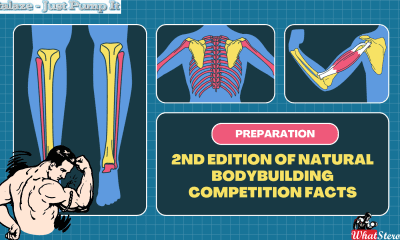
 Bodybuilding8 months ago
Bodybuilding8 months ago2nd Edition of Natural Bodybuilding Competition Facts
-
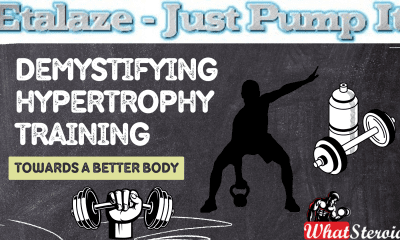
 Bodybuilding1 year ago
Bodybuilding1 year agoDemystifying Hypertrophy Training
-
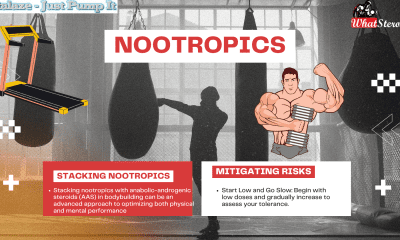
 Bodybuilding9 months ago
Bodybuilding9 months agoAre Nootropics a Better Option to AAS?
-
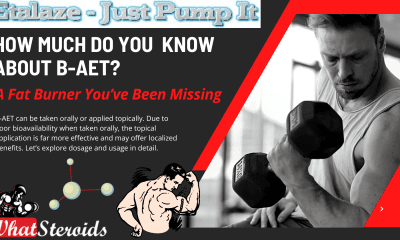
 Anabolic Steroids12 months ago
Anabolic Steroids12 months agoHow Much Do You Know About B-AET? A Fat Burner You’ve Been Missing
-
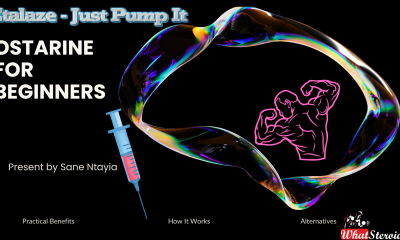
 Steroids4 months ago
Steroids4 months agoOstarine For Beginners: The Ultimate Guide
-

 Product Reviews12 months ago
Product Reviews12 months agoTop Vitamins for Skin Health

